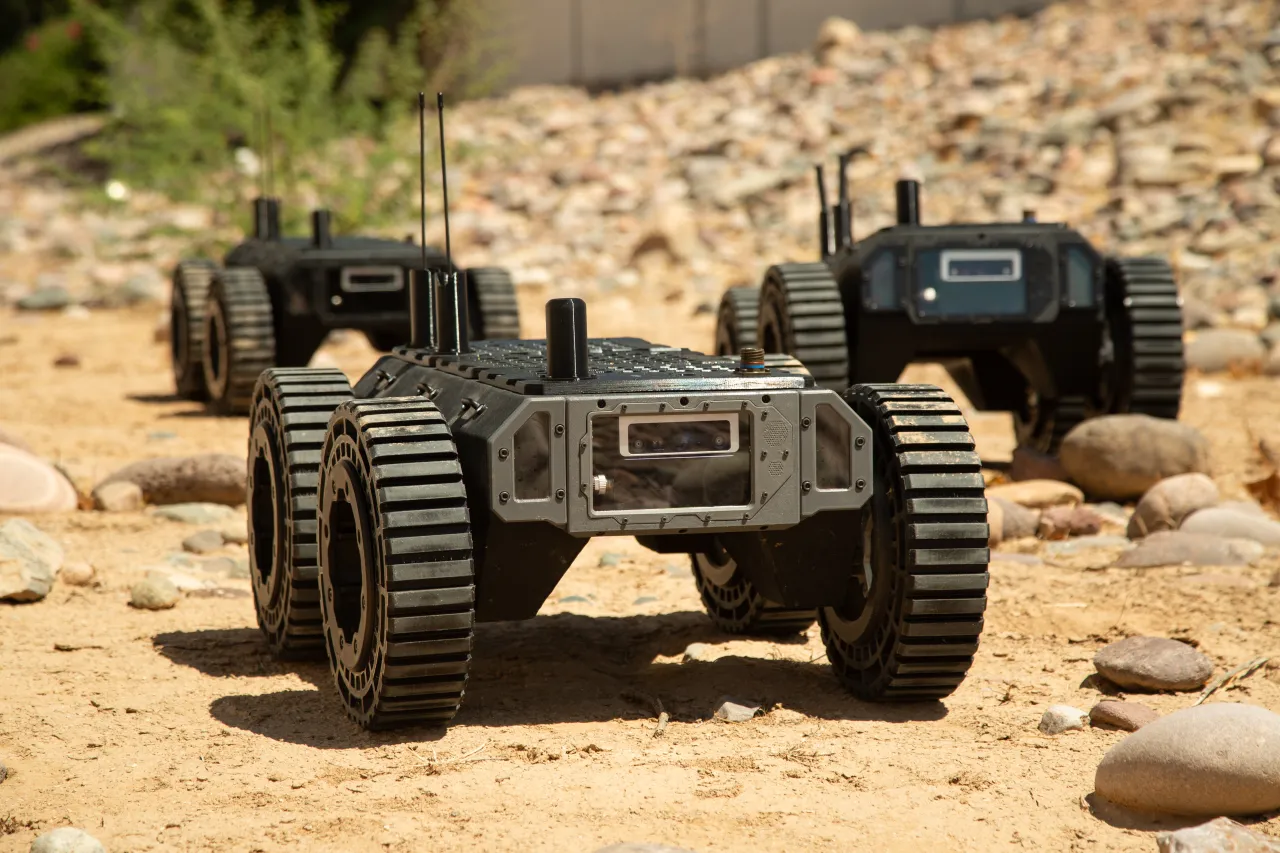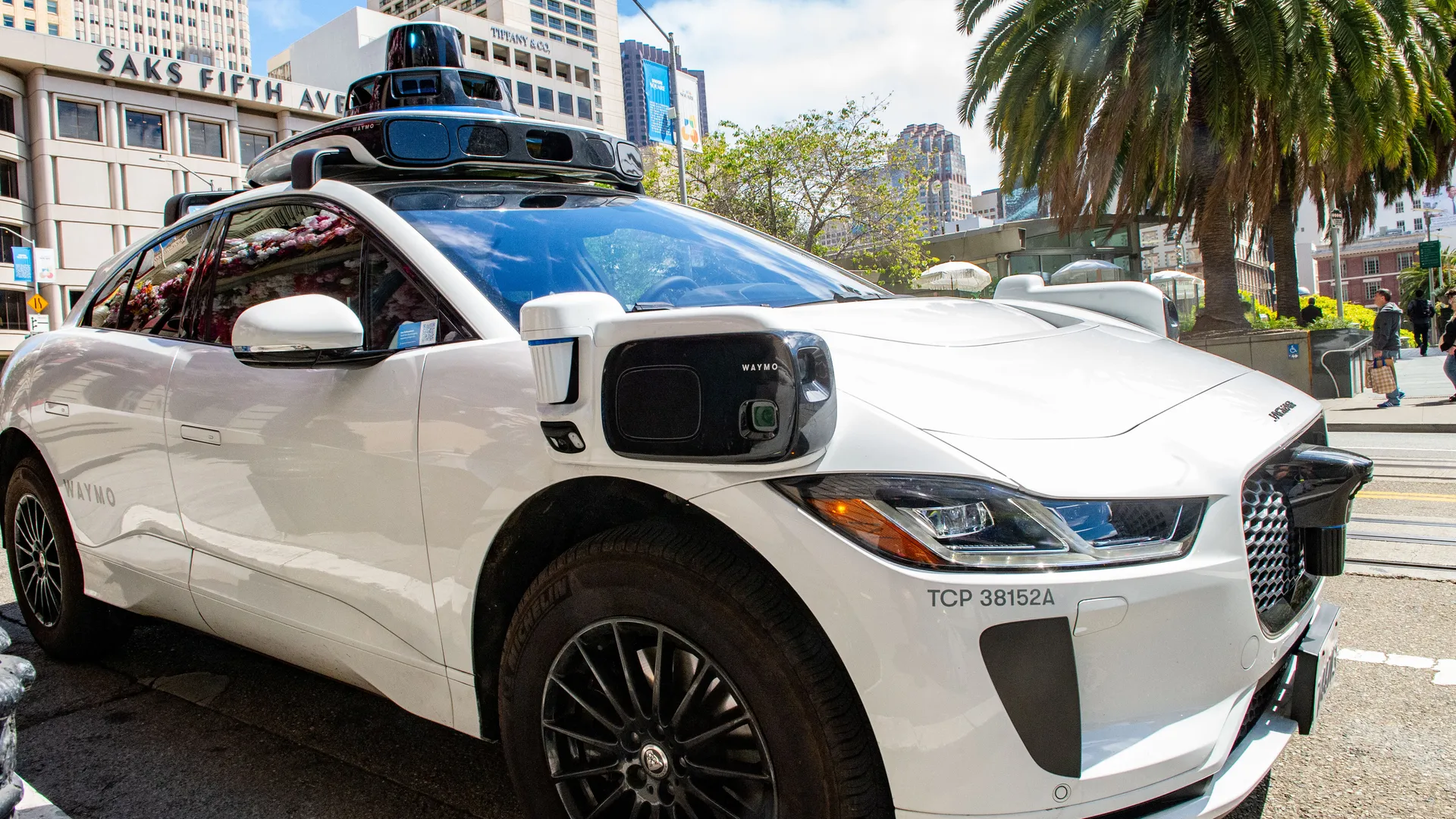Swarmbotics is set to transform battlefields with autonomous robot swarms, advancing tactical tech through its ANTS ecosystem
A startup is striving to transform the battlefield by deploying robotic systems that employ cooperative behaviour to enhance troops’ intelligence and tactical advantage, even though few fully autonomous systems are currently deployed. These systems are called “swarms,” essentially collections of autonomous machines capable of coordinating their actions.
Swarmbotics AI is currently emerging from covert to bring the vision of swarm robotics to reality, a concept that has been the subject of science fiction. The startup is in the process of creating an ecosystem of products known as ANTS (Attritable, Networked, Tactical Swarm) that has the potential to revolutionise battlefield logistics.
Stephen Houghton and Drew Watson, who met while working at Embark Trucks, an autonomous transportation company, founded Swarmbotics last summer. Houghton was the company’s chief operating officer, while Watson was responsible for product operations.
Their history with mechanised systems is considerably older: Houghton, an officer in the Marine Corps, was an early employee of Cruise, the autonomous vehicle corporation currently owned by General Motors. He remained with the organisation as it expanded from approximately 40 employees to approximately 3,000 as of December of last year, and he subsequently assumed the role of Vice President of Global Markets.
Subsequently, he assumed responsibility for Amazon Web Services’ autonomous vehicles and robotics division. In contrast, Watson spent an extended period at the CIA before transitioning to NASA’s Jet Propulsion Laboratory, where he eventually assumed responsibility for the software development of the space agency’s Valkyrie Humanoid Robot program.
Last summer, Applied Intuition acquired Embark, and the duo resolved to pursue their subsequent endeavours.

Houghton stated, “We have become fixated on robot swarms.” In his explanation, several factors contribute to this: The majority of the capital and time in the private sector have been allocated to developing highly expensive autonomous systems, such as robotaxis, that must be nearly flawless before they are deployed and utilised in conjunction with humans. However, the duo began to consider scenarios in which less expensive and less sophisticated robots could be consolidated and deployed more rapidly.
Swarm robotics is a relatively novel field of research. Most of that research has been conducted in academic settings rather than on the battlefield, and it pertains to the behaviour of UAV swarms. In regions such as Ukraine, drones have been employed extensively in the conflict against Russia; however, most of these systems are operated remotely by humans and do not demonstrate autonomously cooperative behaviour.
Houghton acknowledges that air and ground swarming can potentially transform the landscape. However, they present distinct advantages and challenges. While the air is more straightforward to navigate, robots on the ground can generally remain on the field for a longer period and transport a greater amount of weight.
Swarmbotics initially concentrates on the latter domain, beginning with two platforms: the Haul ANT, a larger, hybrid-electric, autonomous ATV, and the Fire ANT, a smaller, 60-pound ATV. In essence, both are mobile batteries: Swarmbotics offers a platform that customers can utilise for various payloads, including intelligence, surveillance, electronic warfare, kinetics, and medivac capabilities. Houghton stated that the objective is to ensure that the DOD is as flexible and interoperable as possible.

“One of the great things about these lower-cost robots is that you can rapidly expand their number to the hundreds or even thousands,” he stated. “There is a diverse array of swarm behaviours that they refer to as “plays” that you can begin to employ.”
The transition from costly systems to more affordable platforms has been comprehensive across numerous Department of Defence programs. The Department of Defence has implemented significant initiatives, such as Replicator, to procure low-cost systems in bulk from private industry. Houghton stated that it represents a significant paradigm shift.
“In other locations where I have travelled, locating the most efficient sensor is necessary.” He stated, “The technology that is new, expensive, and has the highest potential is the most innovative.” “We are essentially conducting the opposite.” We are asking, “Okay if we wish to maintain this as an attainable platform, what is the optimal price for the sensors’ performance?” We are not searching for the best-in-class product priced at a tenfold premium, as it does not make financial sense on an attritable platform. That does enable us to gain access to those larger volumes more rapidly.
Swarmbotics has secured a little over $4 million in funding from Quiet Capital, Silent Ventures, LMNT Ventures, and Soma Capital, with nearly all the funds allocated to engineering. The company is presently concentrating on presenting increasingly advanced technology to DOD acquisition officers. However, it intends to sell robots to commercial firms eventually.
The 11-person company has created the initial platforms within the ANTS ecosystem. Presently, it is concentrating on the advancement of the autonomy of individual robots, the integration of agents, and the development of swarm technology. The objective is for the swarms to possess a comprehensive collection of “plays” that the user can select to execute, contingent upon the robots’ intended tasks.
“We are only beginning to explore the potential of the swarm as we continue to incorporate multi-agents.”



